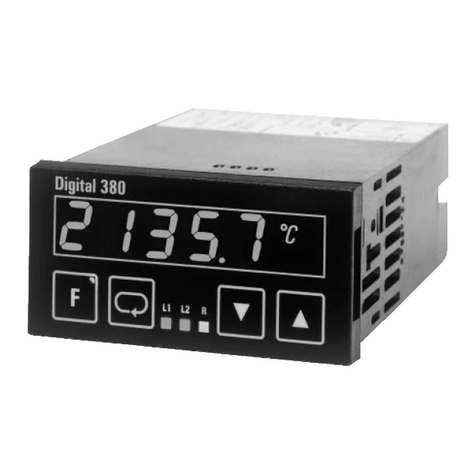
5
17. Visualization ...........................................105
17.1 VWERT ( display / definition of process values ) .............................105
17.2 VBAR ( bargraph display )..........................................107
17.3 VPARA ( parameter operation ).......................................109
17.4 VTREND ( trend display ) ..........................................111
18. Communication .........................................113
18.1 L1READ ( read level1 data ) .........................................113
18.2 L1WRIT ( write level1 data ).........................................114
18.3 DPREAD ( read level1 data via PROFIBUS ) ................................115
18.4 DPWRIT ( write level1 data via PROFIBUS ) ...............................116
19. KS98+ I/O extensions with CANopen .............................117
19.1 RM 211, RM212 and RM213 basic modules ................................118
19.2 C_RM2x (CANopen fieldbuscoupler RM 201) ...............................119
19.3 RM_DI (RM 200 - (digital input module) ..................................120
19.4 RM_DO (RM 200 - digital output module) .................................121
19.5 RM_AI (RM200 - analog input module) ..................................122
19.6 Potentiometer connection and calibration ................................124
19.7 RM_(RM200 - analog output module) ...................................125
19.8 RM_DMS strain gauge module.......................................126
20. KS 98+ -KS98+ cross communication.............................129
20.1 CRCV (receive mod. block no's 22,24,26,28 no.56) ............................130
20.2 CSEND (Send mod. blockno.'s 21, 23, 25, 27 - No. 57) ..........................131
21. Connection of KS 800 and KS 816 ...............................133
21.1 C_KS8x (KS 800 and KS 816 node function - no. 58) ...........................134
21.2 KS8x (KS 800/ KS 816 controller function - no. 59) ............................135
22. Description of KS98 CAN bus extension ...........................137
22.1 CPREAD (CAN-PDO read function) ....................................141
22.2 CPWRIT (CAN-PDO write function) ...................................142
22.3 CSDO CAN-SDO function .........................................143
23. Programmer ...........................................145
23.1 APROG ( analog programmer ) / APROGD ( APROG data ) .......................145
23.2 DPROG ( digital programmer ) / DPROGD ( DPROG data ) ........................153
24. Controller.............................................159
24.1 CONTR (Controllerfunction with one parameterset) ...........................159
24.2 CONTR+ (Controllerfunction with six parametersets) ..........................160
24.3 PIDMA ....................................................161
24.4 Parameter und Konfiguration für CONTR, CONTR+ und PIDMA. ....................163
24.5 Small controller ABC ...........................................166
24.6 Controller behaviour .............................................169
24.7 Optimizing the controller ..........................................181
24.8 Self-tuning rcontroller adaptation to the process ...........................182
24.9 Controller characteristics and self-tuning with PIDMA .........................187
24.10 Empirical optimization ............................................192
24.11 Set-point functions..............................................193
24.12 Process value calculation..........................................199
25. Inputs ...............................................205
25.1 AINP1 ( analog input 1) ...........................................205
25.2 AINP3...AINP5 ( analog inputs 3...5 )....................................211
25.3 AINP6 ( analog input 6 ) ...........................................212
25.4 DINPUT ( digital inputs ) ..........................................216
26. Outputs ..............................................217
26.1 OUT1 and OUT2 ( process outputs 1 and 2 )................................217
26.2 OUT3 ( process output 3 ) ..........................................218
26.3 OUT4 and OUT5 ( process outputs 4 and 5 )................................219
26.4 DIGOUT ( digital outputs ) ..........................................220




























